Scissor beak, aka: crossed beak, crooked beak, is a condition in which the top and bottom beaks do not align properly. It can be caused by genetics, an injury or the inability to maintain the beak’s length and shape by normal honing on rocks or other hard surfaces.
One of my first chicks, Esther, an Easter Egger, was born with with this common genetic deformity. It was so mild that I did not notice it for weeks. Scissor-beak varies in severity, but most chicks can eat and drink independently. Crossed beak need not be an automatic death sentence as believed by some. Most cross-beaked chicks adapt and thrive, leading long, happy lives. However, there are some chicks in which the defect is too severe for them to eat or drink independently and they can not survive without constant assistance.
Esther lived four years until without help eating or drinking. She was put to sleep after being diagnosed with cancer throughout her oviduct and other organs and she is dearly missed. It did take her more time and effort to eat than the other chickens and she was never as large as the other birds, but that is to be expected.
Since crossed beaked chickens cannot pick up pieces of food using both halves of their beaks as utensils, they adapt by scooping food into the bottom half of their beaks. I find that it helps to put Esther’s feed in a deep dish, raised up to chest level so it has less distance to travel to reach her tongue than if it were on the ground. This small adaptation is sometimes all it takes to help crossed-beaked chickens eat.
Some chickens find it easier to eat a feed to which water has been added to make it the consistency of oatmeal. Grinding up feed in a coffee grinder and adding water to make a wet mash may help severely scissor-beaked chickens.
The important thing to watch out for with this condition is that the chicken is able to eat, not only due to their physical limitations but because other flock members may attempt to keep them away from the feed. If that occurs, the chicken should be put in a safe place where only she can access the feed.
I have found that using a poultry nipple watering system has made drinking much less of an effort for Esther as the water drips into her mouth instead of her having to stoop down, scoop up some in her lower beak and hope that it makes it to the back of her throat when she stands up straight.
Chickens maintain the length and shape of their beaks by wiping them on rocks or other abrasive surfaces while foraging, but scissor beaked chickens have difficulty with this routine task. Due to the severity of Esther’s defect, she cannot hone her beak length independently and we periodically trim it for her using dog nail clippers. A Dremmel tool or file can accomplish the same objective, but the vibration from those methods may be more upsetting to the bird than a quick slip with nail clippers..
(Note: Chickens confined to a run should be provided with a paver, brick or cement block for beak honing.)
When trimming Esther’s beak, we always have styptic powder at the ready in our chicken first aid kit. Beaks are vascular and if cut too far back, will bleed profusely. Unfortunately, I know this from first-hand experience and it was a frightening lesson in preparedness.
When chicks have scissor beak, it is safe to assume that genetics are to blame, therefore breeding them as adults is not recommended since the condition can be passed down to future generations.
Kathy Shea Mormino
Affectionately known internationally as The Chicken Chick®, Kathy Shea Mormino shares a fun-loving, informative style to raising backyard chickens. …Read on


shop my SPONSORS
Scissor beak, aka: crossed beak, crooked beak, is a condition in which the top and bottom beaks do not align properly. It can be caused by genetics, an injury or the inability to maintain the beak’s length and shape by normal honing on rocks or other hard surfaces.
One of my first chicks, Esther, an Easter Egger, was born with with this common genetic deformity. It was so mild that I did not notice it for weeks. Scissor-beak varies in severity, but most chicks can eat and drink independently. Crossed beak need not be an automatic death sentence as believed by some. Most cross-beaked chicks adapt and thrive, leading long, happy lives. However, there are some chicks in which the defect is too severe for them to eat or drink independently and they can not survive without constant assistance.
Esther lived four years until without help eating or drinking. She was put to sleep after being diagnosed with cancer throughout her oviduct and other organs and she is dearly missed. It did take her more time and effort to eat than the other chickens and she was never as large as the other birds, but that is to be expected.
Since crossed beaked chickens cannot pick up pieces of food using both halves of their beaks as utensils, they adapt by scooping food into the bottom half of their beaks. I find that it helps to put Esther’s feed in a deep dish, raised up to chest level so it has less distance to travel to reach her tongue than if it were on the ground. This small adaptation is sometimes all it takes to help crossed-beaked chickens eat.
Some chickens find it easier to eat a feed to which water has been added to make it the consistency of oatmeal. Grinding up feed in a coffee grinder and adding water to make a wet mash may help severely scissor-beaked chickens.
The important thing to watch out for with this condition is that the chicken is able to eat, not only due to their physical limitations but because other flock members may attempt to keep them away from the feed. If that occurs, the chicken should be put in a safe place where only she can access the feed.
I have found that using a poultry nipple watering system has made drinking much less of an effort for Esther as the water drips into her mouth instead of her having to stoop down, scoop up some in her lower beak and hope that it makes it to the back of her throat when she stands up straight.
Chickens maintain the length and shape of their beaks by wiping them on rocks or other abrasive surfaces while foraging, but scissor beaked chickens have difficulty with this routine task. Due to the severity of Esther’s defect, she cannot hone her beak length independently and we periodically trim it for her using dog nail clippers. A Dremmel tool or file can accomplish the same objective, but the vibration from those methods may be more upsetting to the bird than a quick slip with nail clippers..
(Note: Chickens confined to a run should be provided with a paver, brick or cement block for beak honing.)
When trimming Esther’s beak, we always have styptic powder at the ready in our chicken first aid kit. Beaks are vascular and if cut too far back, will bleed profusely. Unfortunately, I know this from first-hand experience and it was a frightening lesson in preparedness.
When chicks have scissor beak, it is safe to assume that genetics are to blame, therefore breeding them as adults is not recommended since the condition can be passed down to future generations.



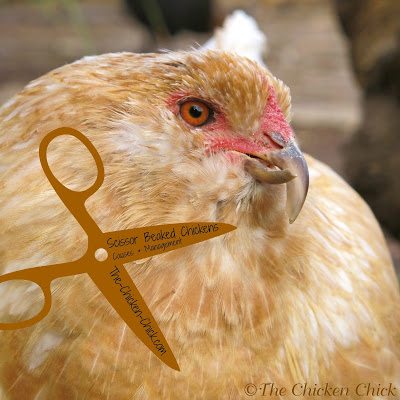
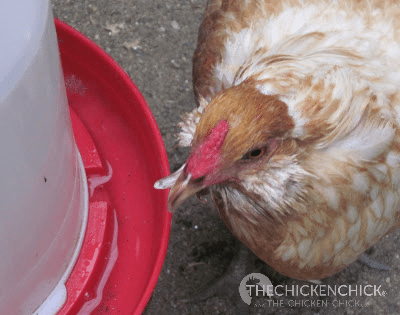
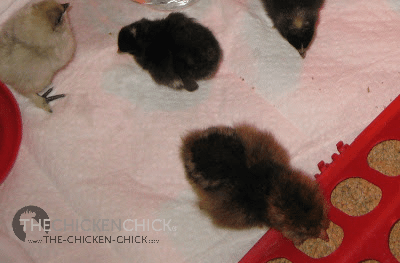
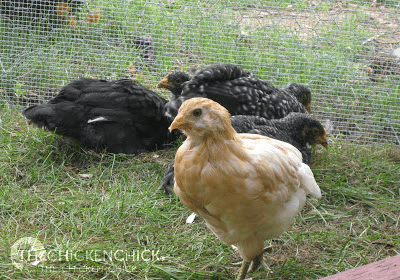
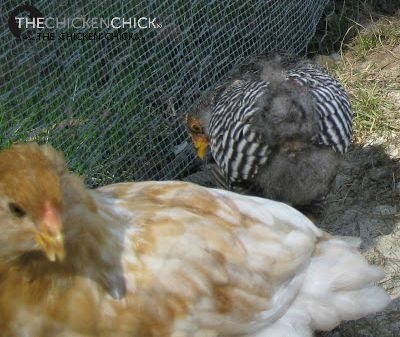
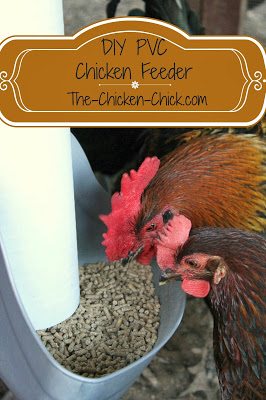
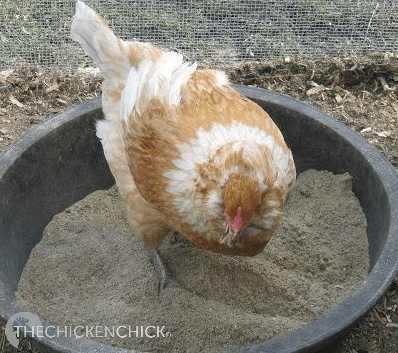
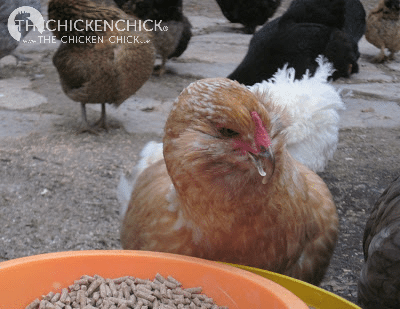
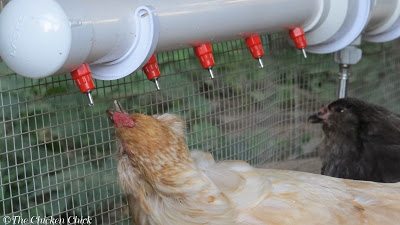
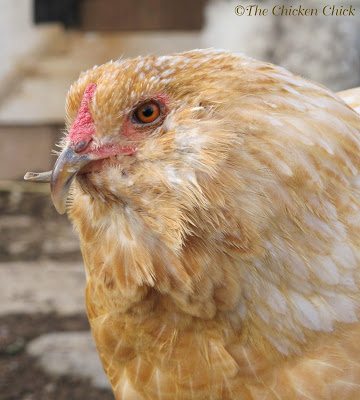
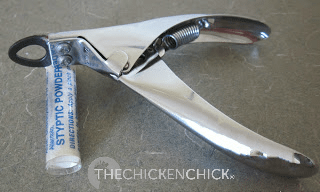
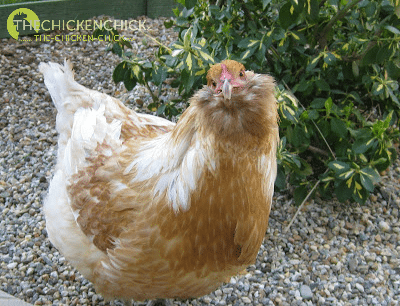

























i have an amazing house chicken named madame scissor (i know not the most unique name) her beak was severely crossed at only a few days old she is now 6 1/2 mos old we feed her in a small plastic trashcan so she can scratch and kick without making a huge mess lol it works great! she also gets special treats her favs are oatmeal smashed strawberries and carrots that have been put thru the blender…she is amazing! she has learned how to use the doggie door and comes and goes as she pleases but always comes in to… Read more »
You're a good chicken mama, Barbara.
I read this weeks ago after porting to your FB page about our little hen Eddie. She is still with us and growing well. Her beak is severely deformed and we find it helps to feed her with a syringe on days when she cant seem to get enough to eat. She prefers to be with humans, but is well accepted in our small remaining flock of 7 Silkies and one Japanese bantam hen. She just got her first diaper…. looks like she is going to be with us for awhile!
We saved an Americana from our local farm store; we noticed a slight scissor beak and thought we would try to save her and if not, give her the best little life she could have. We fed her separately from the other's and watched to ensure she was eating enough. Sadly, over time her beak got worse and worse and today, she passed. She was about 7 weeks, and the loviest chicken I had ever encountered. Her name was Edwina Scissor-Beak, and my daughter and I were very sad to see her go. It seems this is a common issue… Read more »
Poultry should not eat bread. I can't tell you why but I've read that it's not good for them.